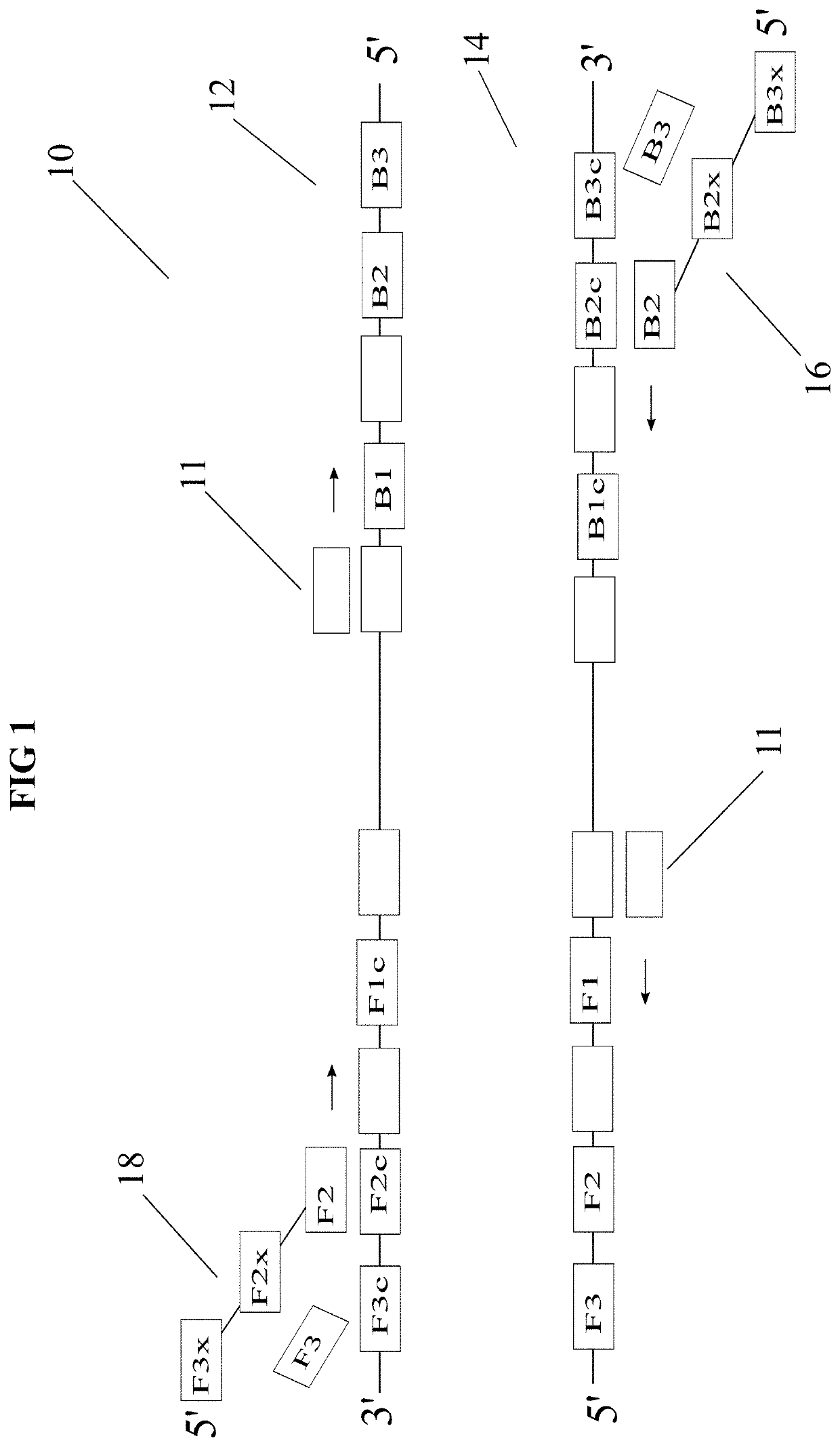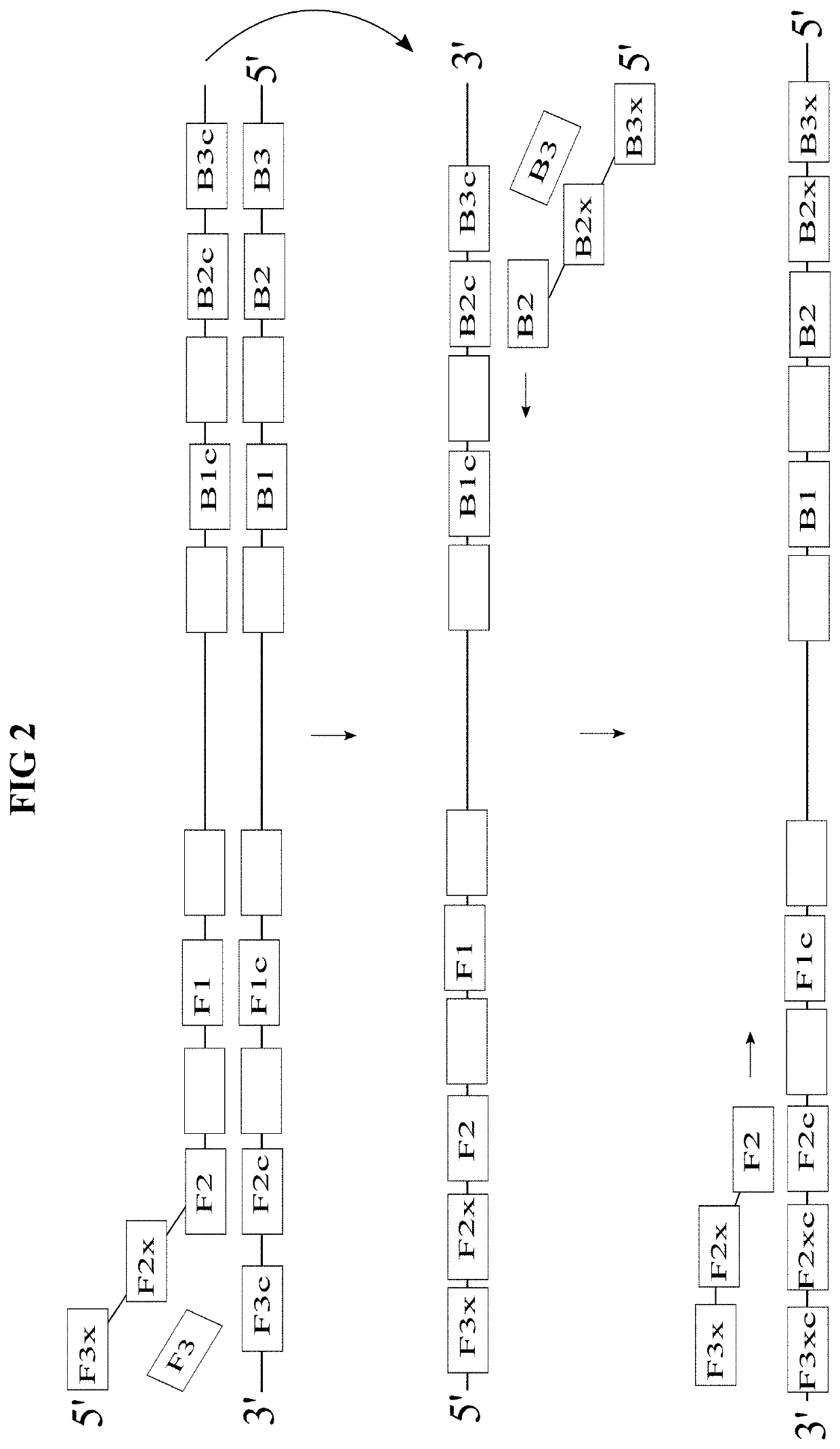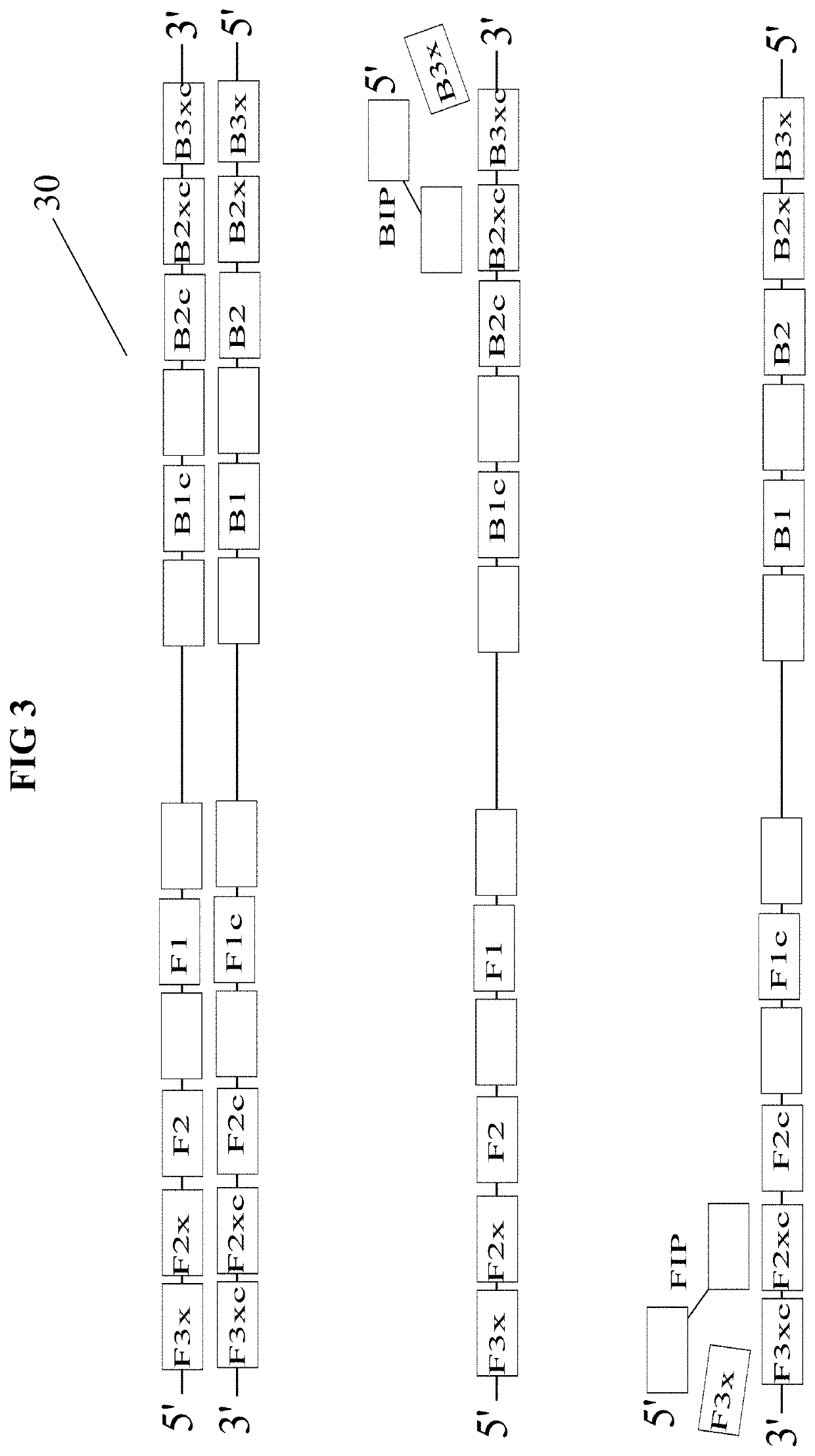Methods for digital readout quantification of nucleic acids
- Summary
- Abstract
- Description
- Claims
- Application Information
AI Technical Summary
Benefits of technology
Problems solved by technology
Method used
Image
Examples
Embodiment Construction
[0036]The invention generally is directed to diagnostic methods using nucleic acid amplification technology, more particularly to loop-mediated isothermal amplification (LAMP) based diagnostic methods that enable digital readout end-point quantitative tests that may be amenable to naked eye readout. These methods not only have a low power requirement but also provide a high degree of specificity and sensitivity. As discussed above, whereas PCR based diagnostic methods are effective, because of the high cost of equipment, power requirement and need to continuously monitor the result, LAMP based diagnostic methods may be preferred in certain situations. For example, when amplification is being performed outside of a laboratory at point of care, LAMP based diagnostic methods may be preferred.
[0037]Two methods for achieving quantitative, end-point nucleic acid detection via LAMP are disclosed herein. Both methods feature multiple threshold array (MTA) assay. A MTA includes a set of inde...
PUM
| Property | Measurement | Unit |
|---|---|---|
| Temperature | aaaaa | aaaaa |
Abstract
Description
Claims
Application Information
 Login to View More
Login to View More - R&D Engineer
- R&D Manager
- IP Professional
- Industry Leading Data Capabilities
- Powerful AI technology
- Patent DNA Extraction
Browse by: Latest US Patents, China's latest patents, Technical Efficacy Thesaurus, Application Domain, Technology Topic, Popular Technical Reports.
© 2024 PatSnap. All rights reserved.Legal|Privacy policy|Modern Slavery Act Transparency Statement|Sitemap|About US| Contact US: help@patsnap.com










